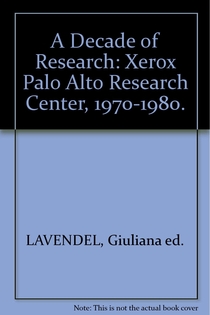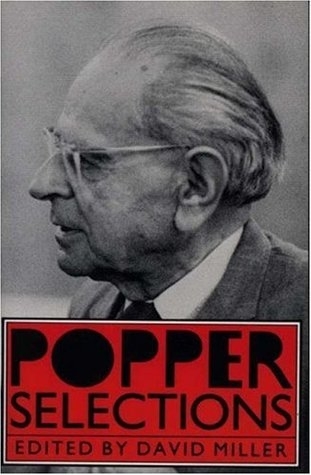
Patrick Collison Book Recommendations - 70 Important Books
Patrick Collison
If you should know one thing about Patrick Collison it is his enormous appetite for books. Patrick Collison book recommendations on his blog count up to 500 books.
We've made a thorough research and selected only important books that Patrick highlighted on his own bookshelf. He told that he often recommends books on Twitter and feels sorry for how haphazard book suggestion look, we've decided to change that and bring his favorite books into one beautiful list.
This list of Patrick Collison book recommendations is filtered for the most interesting books that left a lasting impression on Stripe CEO.
Take a look at 70 Patrick Collison favorite books!
See all
0
likes
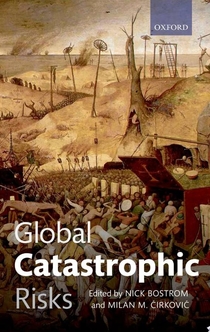
Global Catastrophic Risks
A global catastrophic risk is one with the potential to wreak death and destruction on a global scale. In human history, wars and plagues have done so on more than one occasion, and misguided ideologies and totalitarian regimes have darkened an entire era or a region. Advances in technology are adding dangers of a new kind. It could happen again. In Global Catastrophic Risks 25 leading experts look at the gravest risks facing humanity in the 21st century, including asteroid impacts, gamma-ray bursts, Earth-based natural catastrophes, nuclear war, terrorism, global warming, biological weapons, totalitarianism, advanced nanotechnology, general artificial intelligence, and social collapse. The book also addresses over-arching issues - policy responses and methods for predicting and managing catastrophes. This is invaluable reading for anyone interested in the big issues of our time; for students focusing on science, society, technology, and public policy; and for academics, policy-makers, and professionals working in these acutely important fields.
See all
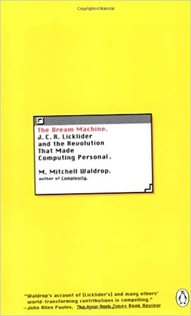
The Dream Machine
The year is 1962. More than a decade will pass before personal computers emerge from the garages of Silicon Valley, and a full thirty years before the Internet explosion of the 1990s. The word computer still has an ominous tone, conjuring up the image of a huge, intimidating device hidden away in an overlit, air-conditioned basement, relentlessly processing punch cards for some large institution: them. Yet, sitting in a nondescript office in Robert McNamara's Pentagon, a quiet forty-seven-year-old civilian is already planning the revolution that will change forever the way computers are perceived. Somehow, the occupant of that office - a former MIT psychologist named J.C.R. Licklider - has seen a future in which computers will empower individuals, instead of forcing them into rigid conformity. He is almost alone in his conviction that computers can become not just superfast calculating machines but joyful machines: tools that will serve as new media of expression, inspirations to creativity, and gateways to a vast world of on line information. And now he is determined to use the Pentagon's money to make that vision a reality.
See all

Nixon Agonistes
With a new preface: A “stunning” analysis of the troubled Republican president by the Pulitzer Prize–winning author of Lincoln at Gettysburg (The New York Times Book Review). In this acclaimed biography that earned him a spot on Nixon’s infamous “enemies list,” Garry Wills takes a thoughtful, in-depth, and often “very amusing” look at the thirty-seventh US president, and draws some surprising conclusions about a man whose name has become synonymous with scandal and the abuse of power (Kirkus Reviews). Arguing that Nixon was a reflection of the country that elected him, Wills examines not only the psychology of the man himself and his relationships with others—from his wife, Pat, to his vice-president, Spiro Agnew—but also the state of the nation at the time, mired in the Vietnam War and experiencing a cultural rift that pitted the young against the old. Putting his findings into moral, economic, intellectual, and political contexts, he ultimately “paints a broad and provocative landscape of the nation’s—and Nixon’s—travails” (The New York Times). Simultaneously compassionate and critical, and raising interesting perspectives on the shifting definitions of terms like “conservative” and “liberal” over recent decades, Nixon Agonistes is a brilliant and indispensable book from one of America’s most acclaimed historians.
See all

Hard Landing
In this updated paperback edition of a "rich, readable, and authoritative" Fortune) book, Wall Street Journal reporter Petzinger tells the dramatic story of how a dozen men, including Robert Crandall of American Airlines, Frank Borman of Eastern, and Richard Ferris of United, battled for control of the world's airlines.
See all
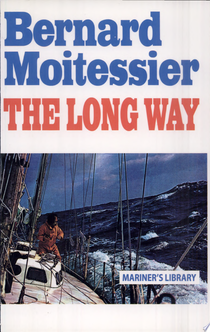
The Long Way
The Long Way is Bernard Moitessier's own incredible story of his participation in the first Golden Globe Race, a solo, non-stop circumnavigation rounding the three great Capes of Good Hope, Leeuwin, and the Horn. For seven months, the veteran seafarer battled storms, doldrums, gear-failures, knock-downs, as well as overwhelming fatigue and loneliness. Then, nearing the finish, Moitessier pulled out of the race and sailed on for another three months before ending his 37,455-mile journey in Tahiti. Not once had he touched land.
See all
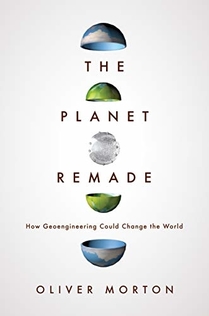
The Planet Remade
A fascinating look at the perils and promise of geoengineering and our potential future on a warming planetThe risks of global warming are pressing and potentially vast. The difficulty of doing without fossil fuels is daunting, possibly even insurmountable. So there is an urgent need to rethink our responses to the crisis. To meet that need, a small but increasingly influential group of scientists is exploring proposals for planned human intervention in the climate system: a stratospheric veil against the sun, the cultivation of photosynthetic plankton, fleets of unmanned ships seeding the clouds. These are the technologies of geoengineering—and as Oliver Morton argues in this visionary book, it would be as irresponsible to ignore them as it would be foolish to see them as a simple solution to the problem.The Planet Remade explores the history, politics, and cutting-edge science of geoengineering. Morton weighs both the promise and perils of these controversial strategies and puts them in the broadest possible context. The past century’s changes to the planet—to the clouds and the soils, to the winds and the seas, to the great cycles of nitrogen and carbon—have been far more profound than most of us realize. Appreciating those changes clarifies not just the scale of what needs to be done about global warming, but also our relationship to nature.Climate change is not just one of the twenty-first century’s defining political challenges. Morton untangles the implications of our failure to meet the challenge of climate change and reintroduces the hope that we might. He addresses the deep fear that comes with seeing humans as a force of nature, and asks what it might mean—and what it might require of us—to try and use that force for good.
See all

The Princeton Companion to Applied Mathematics
The must-have compendium on applied mathematicsThis is the most authoritative and accessible single-volume reference book on applied mathematics. Featuring numerous entries by leading experts and organized thematically, it introduces readers to applied mathematics and its uses; explains key concepts; describes important equations, laws, and functions; looks at exciting areas of research; covers modeling and simulation; explores areas of application; and more.Modeled on the popular Princeton Companion to Mathematics, this volume is an indispensable resource for undergraduate and graduate students, researchers, and practitioners in other disciplines seeking a user-friendly reference book on applied mathematics.Features nearly 200 entries organized thematically and written by an international team of distinguished contributorsPresents the major ideas and branches of applied mathematics in a clear and accessible wayExplains important mathematical concepts, methods, equations, and applicationsIntroduces the language of applied mathematics and the goals of applied mathematical researchGives a wide range of examples of mathematical modelingCovers continuum mechanics, dynamical systems, numerical analysis, discrete and combinatorial mathematics, mathematical physics, and much moreExplores the connections between applied mathematics and other disciplinesIncludes suggestions for further reading, cross-references, and a comprehensive index
See all

Spacetime and Geometry
Spacetime and Geometry is an introductory textbook on general relativity, specifically aimed at students. Using a lucid style, Carroll first covers the foundations of the theory and mathematical formalism, providing an approachable introduction to what can often be an intimidating subject. Three major applications of general relativity are then discussed: black holes, perturbation theory and gravitational waves, and cosmology. Students will learn the origin of how spacetime curves (the Einstein equation) and how matter moves through it (the geodesic equation). They will learn what black holes really are, how gravitational waves are generated and detected, and the modern view of the expansion of the universe. A brief introduction to quantum field theory in curved spacetime is also included. A student familiar with this book will be ready to tackle research-level problems in gravitational physics.
See all
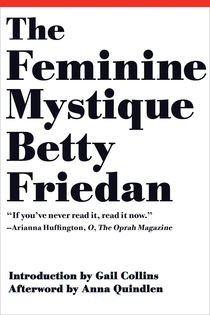
The Feminine Mystique
Presents an analysis of the position of women in Western society.

Something Incredibly Wonderful Happens
How do we reclaim our innate enchantment with the world? And how can we turn our natural curiosity into a deep, abiding love for knowledge? Frank Oppenheimer, the younger brother of the physicist J. Robert Oppenheimer, was captivated by these questions, and used his own intellectual inquisitiveness to found the Exploratorium, a powerfully influential museum of human awareness in San Francisco, that encourages play, creativity, and discovery—all in the name of understanding. In this elegant biography, K. C. Cole investigates the man behind the museum with sharp insight and deep sympathy. The Oppenheimers were a family with great wealth and education, and Frank, like his older brother, pursued a career in physics. But while Robert was unceasingly ambitious, and eventually came to be known for his work on the atomic bomb, Frank’s path as a scientist was much less conventional. His brief fling with the Communist Party cost him his position at the University of Minnesota, and he subsequently spent a decade ranching in Colorado before returning to teaching. Once back in the lab, however, Frank found himself moved to create something to make the world meaningful after the bombing of Hiroshima and Nagasaki. He was inspired by European science museums, and he developed a dream of teaching Americans about science through participatory museums. Thus was born the magical world of the Exploratorium, forever revolutionizing not only the way we experience museums, but also science education for years to come. Cole has brought this charismatic and dynamic figure to life with vibrant prose and rich insight into Oppenheimer as both a scientist and an individual.
See all
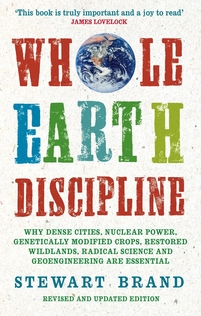
Whole Earth Discipline
"This is a very scary book by a very bright man, offering a picture of humanity's future that is both ominous and exhilarating." -Edward O. Wilson This eye-opening book by the legendary author of the National Book Award-winning Whole Earth Catalog persuasively details a new approach to our stewardship of the planet. Lifelong ecologist and futurist Stewart Brand relies on scientific rigor to shatter myths concerning nuclear energy, urbanization, genetic engineering, and other controversial subjects, showing exactly where the sources of our dilemmas lie and offering a bold, inventive set of policies and design- based solutions for shaping a more sustainable society. Thought- provoking and passionately argued, this is a pioneering book on one of the hottest issues facing humanity today.
See all
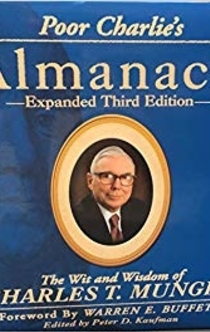
Poor Charlie's Almanack
Charles Munger is Warren Buffett decade's long business partner, and his investment filter, jokingly called by Mr. Buffett - the abominable no man. The early pages cover Munger's family history, his framework for investing [wait for the fat pitches, and assess each opportunity using rational, rigorous frameworks drawn from multiple disciplines (and not finance theory!)], and even some warm testaments from family, friends and colleagues. The next section, assembled by leading investor Whitney Tilson, is well edited and benefits from Tilson's massaging of quotations made over time into logical sub-headings. The bulk of the text though is, as the subtitle suggests, the wit and wisdom of Mr. Munger as conveyed through various speeches in the last couple decade or so before 2006.
See all

The Journalist and the Murderer
A seminal work and examination of the psychopathology of journalism. Using a strange and unprecedented lawsuit as her larger-than-life example -- the lawsuit of Jeffrey MacDonald, a convicted murderer, against Joe McGinniss, the author of Fatal Vision, a book about the crime -- she delves into the always uneasy, sometimes tragic relationship that exists between journalist and subject. In Malcolm's view, neither journalist nor subject can avoid the moral impasse that is built into the journalistic situation. When the text first appeared, as a two-part article in The New Yorker, its thesis seemed so radical and its irony so pitiless that journalists across the country reacted as if stung.Her book is a work of journalism as well as an essay on journalism: it at once exemplifies and dissects its subject. In her interviews with the leading and subsidiary characters in the MacDonald-McGinniss case -- the principals, their lawyers, the members of the jury, and the various persons who testified as expert witnesses at the trial -- Malcolm is always aware of herself as a player in a game that, as she points out, she cannot lose. The journalist-subject encounter has always troubled journalists, but never before has it been looked at so unflinchingly and so ruefully. Hovering over the narrative -- and always on the edge of the reader's consciousness -- is the MacDonald murder case itself, which imparts to the book an atmosphere of anxiety and uncanniness. The Journalist and the Murderer derives from and reflects many of the dominant intellectual concerns of our time, and it will have a particular appeal for those who cherish the odd, the off-center, and the unsolved.
See all

The Cowshed
The Chinese Cultural Revolution began in 1966 and led to a ten-year-long reign of Maoist terror throughout China, in which millions died or were sent to labor camps in the country or subjected to other forms of extreme discipline and humiliation. Ji Xianlin was one of them. The Cowshed is Ji’s harrowing account of his imprisonment in 1968 on the campus of Peking University and his subsequent disillusionment with the cult of Mao. As the campus spirals into a political frenzy, Ji, a professor of Eastern languages, is persecuted by lecturers and students from his own department. His home is raided, his most treasured possessions are destroyed, and Ji himself must endure hours of humiliation at brutal “struggle sessions.” He is forced to construct a cowshed (a makeshift prison for intellectuals who were labeled class enemies) in which he is then housed with other former colleagues. His eyewitness account of this excruciating experience is full of sharp irony, empathy, and remarkable insights into a central event in Chinese history.In contemporary China, the Cultural Revolution remains a delicate topic, little discussed, but if a Chinese citizen has read one book on the subject, it is likely to be Ji’s memoir. When The Cowshed was published in China in 1998, it quickly became a bestseller. The Cultural Revolution had nearly disappeared from the collective memory. Prominent intellectuals rarely spoke openly about the revolution, and books on the subject were almost nonexistent. By the time of Ji’s death in 2009, little had changed, and despite its popularity, The Cowshed remains one of the only testimonies of its kind. As Zha Jianying writes in the introduction, “The book has sold well and stayed in print. But authorities also quietly took steps to restrict public discussion of the memoir, as its subject continues to be treated as sensitive. The present English edition, skillfully translated by Chenxin Jiang, is hence a welcome, valuable addition to the small body of work in this genre. It makes an important contribution to our understanding of that period.”
See all

Nixonland
An exciting e-format containing 27 video clips taken directly from the CBS news archive of a brilliant, best-selling account of the Nixon era by one of America’s most talented young historians.Between 1965 and 1972 America experienced a second civil war. Out of its ashes, the political world we know today was born. Nixonland begins in the blood and fire of the Watts riots-one week after President Johnson signed the Voting Rights Act, and nine months after his historic landslide victory over Barry Goldwater seemed to have heralded a permanent liberal consensus. The next year scores of liberals were thrown out of Congress, America was more divided than ever-and a disgraced politician was on his way to a shocking comeback: Richard Nixon. Six years later, President Nixon, harvesting the bitterness and resentment borne of that blood and fire, was reelected in a landslide even bigger than Johnson's, and the outlines of today's politics of red-and-blue division became already distinct. Cataclysms tell the story of Nixonland: • Angry blacks burning down their neighborhoods, while suburbanites defend home and hearth with shotguns. • The civil war over Vietnam, the assassinations, the riot at the Democratic National Convention. • Richard Nixon acceding to the presidency pledging a new dawn of national unity--and governing more divisively than any before him. • The rise of twin cultures of left- and right-wing vigilantes, Americans literally bombing and cutting each other down in the streets over political differences. •And, finally, Watergate, the fruit of a president who rose by matching his own anxieties and dreads with those of an increasingly frightened electorate--but whose anxieties and dreads produced a criminal conspiracy in the Oval Office.
See all

The Mind–Body Problem
The Mind–Body Problem: A Psychobiological Approach examines the mind-body problem from a psychobiological perspective. It intends to show that the idea of a separate mental entity is not only unwarranted by the available data and the existing psychological models, but collides head-on with the most fundamental ideas of all modern science and is thus a stumbling block to progress. The book abandons ordinary language in favor of the state space language, which is mathematically precise and is shared by science and scientific philosophy.Comprised of 10 chapters, this monograph begins with an overview of the mind-body problem and its main proposed solutions, classified into main genera: psychophysical monism and psychophysical dualism. In particular, ten views on the mind-body problem are analyzed, along with three main varieties of materialism with regards to the problem: eliminative, reductive (or leveling), and emergentist. The discussion then turns to the notion of a concrete or material system, based on the assumption that behavior is an external manifestation of neural processes. Subsequent chapters explore the specific functions of the central nervous system; sensation and perception; behavior and motivation; memory and learning; thinking and knowing; and consciousness and personality. The book also considers sociality and social behavior in animals before concluding with an assessment of a psychological explanation of the mind, with emphasis on dualism and monism.This work will be of interest to students, academicians, practitioners, and investigators in the fields of psychobiology, psychology, neurophysiology, and philosophy.
See all

Orality and Literacy
Walter J. Ong’s classic work provides a fascinating insight into the social effects of oral, written, printed and electronic technologies, and their impact on philosophical, theological, scientific and literary thought. This thirtieth anniversary edition – coinciding with Ong’s centenary year – reproduces his best-known and most influential book in full and brings it up to date with two new exploratory essays by cultural writer and critic John Hartley. Hartley provides: A scene-setting chapter that situates Ong’s work within the historical and disciplinary context of post-war Americanism and the rise of communication and media studies; A closing chapter that follows up Ong’s work on orality and literacy in relation to evolving media forms, with a discussion of recent criticisms of Ong’s approach, and an assessment of his concept of the ‘evolution of consciousness’; Extensive references to recent scholarship on orality, literacy and the study of knowledge technologies, tracing changes in how we know what we know. These illuminating essays contextualize Ong within recent intellectual history, and display his work’s continuing force in the ongoing study of the relationship between literature and the media, as well as that of psychology, education and sociological thought.
See all
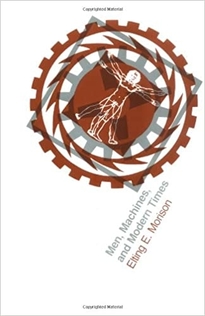
Men, Machines, and Modern Times
Offers an entertaining series of historical accounts taken from the nineteenth century to highlight a main theme: the nature of technological change, the fission brought about in society by such change, and society's reaction to that change.Men, Machines, and Modern Times, though ultimately concerned with a positive alternative to an Orwellian 1984, offers an entertaining series of historical accounts taken from the nineteenth century to highlight a main theme: the nature of technological change, the fission brought about in society by such change, and society's reaction to that change. Beginning with a remarkable illustration of resistance to innovation in the U.S. Navy following an officer's discovery of a more accurate way to fire a gun at sea, Elting Morison goes on to narrate the strange history of the new model steamship, the Wapanoag, in the 1860s. He then continues with the difficulties confronting the introduction of the pasteurization process for milk; he traces the development of the Bessemer process; and finally, he considers the computer. While the discussions are liberally sprinkled with amusing examples and anecdotes, all are related to the more profound and current problem of how to organize and manage system of ideas, energies, and machinery so that it will conform to the human dimension.
See all

Pacific
One of Library Journal’s 10 Best Books of 2015Following his acclaimed Atlantic and The Men Who United the States, New York Times bestselling author Simon Winchester offers an enthralling biography of the Pacific Ocean and its role in the modern world, exploring our relationship with this imposing force of nature.As the Mediterranean shaped the classical world, and the Atlantic connected Europe to the New World, the Pacific Ocean defines our tomorrow. With China on the rise, so, too, are the American cities of the West coast, including Seattle, San Francisco, and the long cluster of towns down the Silicon Valley.Today, the Pacific is ascendant. Its geological history has long transformed us—tremendous earthquakes, volcanoes, and tsunamis—but its human history, from a Western perspective, is quite young, beginning with Magellan’s sixteenth-century circumnavigation. It is a natural wonder whose most fascinating history is currently being made.In telling the story of the Pacific, Simon Winchester takes us from the Bering Strait to Cape Horn, the Yangtze River to the Panama Canal, and to the many small islands and archipelagos that lie in between. He observes the fall of a dictator in Manila, visits aboriginals in northern Queensland, and is jailed in Tierra del Fuego, the land at the end of the world. His journey encompasses a trip down the Alaska Highway, a stop at the isolated Pitcairn Islands, a trek across South Korea and a glimpse of its mysterious northern neighbor.Winchester’s personal experience is vast and his storytelling second to none. And his historical understanding of the region is formidable, making Pacific a paean to this magnificent sea of beauty, myth, and imagination that is transforming our lives.
See all

The Rise and Fall of American Growth
How America's high standard of living came to be and why future growth is under threatIn the century after the Civil War, an economic revolution improved the American standard of living in ways previously unimaginable. Electric lighting, indoor plumbing, motor vehicles, air travel, and television transformed households and workplaces. But has that era of unprecedented growth come to an end? Weaving together a vivid narrative, historical anecdotes, and economic analysis, The Rise and Fall of American Growth challenges the view that economic growth will continue unabated, and demonstrates that the life-altering scale of innovations between 1870 and 1970 cannot be repeated. Robert Gordon contends that the nation's productivity growth will be further held back by the headwinds of rising inequality, stagnating education, an aging population, and the rising debt of college students and the federal government, and that we must find new solutions. A critical voice in the most pressing debates of our time, The Rise and Fall of American Growth is at once a tribute to a century of radical change and a harbinger of tougher times to come.
See all

